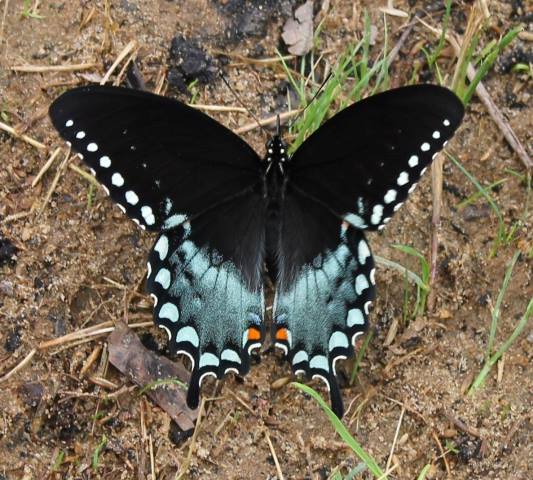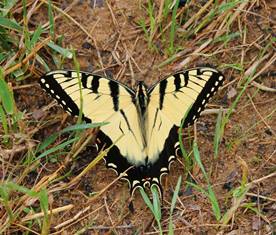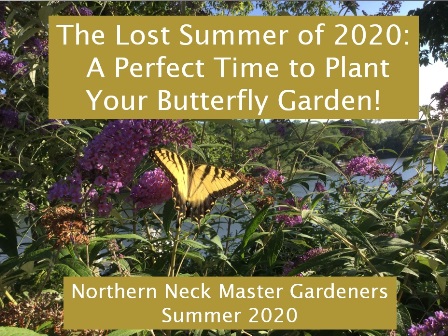
Tag: Insects

Where were the butterflies? 12/09/2020
Did you notice that this year butterflies seemed to appear in our gardens later than usual and in fewer numbers?
Where were they in the spring?
- Did they just arrive late?
- Are reduced populations cyclical?
- Did the weather affect their numbers?
- Will this be a continuing trend – the result of declining habitat, limited food sources, destruction of habitat, and/or increased pesticide use?
Globally, terrestrial insects appear to be declining at a rate of 9% per decade.
More than 40% of insect species are declining and a third are endangered.
Some of the insects most affected are bees, butterflies, moths, beetles, dragonflies, and damselflies.
Example: Between 2000-2009, the number of widespread butterfly species on farmed land in the UK fell by 58% (https://www.ncbi.nlm.nih.gov/pmc/articles/PMC4662585/)
Why Should We Worry?
- Insects = Protein (300 times more efficient than cows)
Although insects are near the bottom of the food chain, many creatures depend on them, directly or indirectly, as a food source.
Are they our food of the future?
3,000 ethnic groups in 130 countries already eat 2,086 species of insects. (Ramos-Elorduy, Julieta; Menzel, Peter (1998). Creepy crawly cuisine: the gourmet guide to edible insects)
- Insects = pollinators.
The plant world relies on their services. Approximately 80% of flowering plants are pollinated by insects.
Commercial agriculture depends on insects for pollination and crop production. 35% of the world’s crop pollination depends directly or indirectly on insects. Insect pollinators contribute $29 billion to the US economy
- Insects = decomposers
Insects recycle, break down biomass, and generate organic matter that fertilizes plants.
- Insects = biological controls
Their value as natural pest control is estimated at $5.4 billion in the U.S. alone
Look through the slide presentation about “The Lost Summer of 2020: A Perfect Time to Plant Your Butterfly Garden!” 
